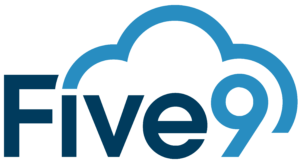A typical Quote to Cash UAT used to mean up to 50 people in a room on laptops, coached by #teamVFP in person, as they learn and test their Quote to Cash implementation.
Those travel days are behind us for now. With restrictions in place and C-19 to deal with, we’ve made the transition to 100% virtual UATs and tailored them to fit each client’s needs across geographies, time zones, and teams.
We interviewed Heather Stewardson, Consultant at VFP, who has navigated virtual UAT sessions with five clients since the Covid-19 restrictions were in place to find out what works and how successful businesses are adopting their new systems.
What’s the goal of a UAT?
When we are configuring software, we borrow the tried-and-true model of User Acceptance Testing common in the tech industry. First, we ensure functionally everything is working – no errors or gotchas in the system. Second, we test their processes from an end-to-end perspective to make sure all critical workflows operate as expected in the new system across all departments.
How important is UAT to the process of implementing Quote to Cash in a business?
It’s critical! At the beginning of any engagement, we focus our time on understanding the need and requirements for process improvements into the client’s workflow. This can be very simple or very complex depending on the project – but once we get to UAT we spend time with all of the users, showcase the functionality, and ensure that we have met all of the needs we uncovered during requirement gathering. It’s generally the first time the client has been hands-on in the system, and it’s crucial to make sure we’ve got it right.
How many UAT sessions does a typical VFP implementation team go through?
Typically we plan for two UAT sessions — and that’s true of most implementations. However, every project is unique and it can be anywhere from one to three. The first UAT is the “getting to know you” phase where we introduce the system, work out any kinks, and identify any new functions we may need to add. At the second UAT – everyone has more fun. The team is familiar and has some experience using the system – we focus on finalizing, re-confirming, and training everyone.
What changed when we moved to an all-virtual platform? Did anything surprise you?
Everyone in the UAT is trying to absorb so much information that’s all new to them: new processes, new steps, new buttons. Even if they are already using Salesforce or FinancialForce, it takes time. We have honed it into train-test-train-test on each piece, so we can keep everyone comfortable with bite-sized material while we still progress through the whole system.
For example – we’ll go through a test case together – sometimes as simple as creating a new opportunity record, approving a timesheet, or creating a journal entry – walk through it together and ensure everyone is comfortable with the function, and then talk about it before moving on. Comfort is built individually while working collaboratively with your peers across the same test case.
What’s the biggest difference between a virtual UAT and an in-person UAT?
I’m surprised at how many clients love having a virtual UAT. It’s allowed us to ensure all parties hear when questions come up rather than having side conversations in other parts of the room. It means that everyone becomes a change champion and moves through all the test cases instead of just a few. That helps teams get and understand everyone’s role, which makes for a smoother transition.
Are there any tips and tricks you’ve learned to make their experience so strong?
Using the full functionality of a web collaboration platform like Zoom is a big part of it. By using virtual break out rooms online, we’re able to move into an “office” with a couple of people at a time and give them one-on-one attention. We also use Zoom’s participant icons – such as Yes/No and Raise a Hand. It’s allowed us to read the room, and we hear from everyone. So it helps us pace ourselves and ensure we know who needs more time, and who’s ready to move on. As consultants, it gives us a great sense of who’s paying attention and engaged, and where we need to focus.
What do your clients say about the virtual UAT experience?
It’s been four months since we started the 100% virtual UAT – and every client has been extremely receptive.
Individually, people have told me they’ve loved it, and some even prefer it. It’s allowed us to accommodate multiple time zones with varying breaks, and generate a sense of accomplishment and progress. They’ve felt that by testing functionally the first day or two and then end-to-end testing the following days on their own, the material and processes are sinking in.
What’s the best advice you have for a company thinking about adopting a Quote to Cash system – knowing it’s all virtual right now?
It’s possible! And it really works. Even in the “new normal” we’ll keep many of these new virtual processes to give our clients the choice and tailor the experience for them. Nothing is better than face-to-face consulting, but virtual UAT sessions are an excellent option now, and when the pandemic is behind us. You can still seize the opportunity to digitally transform your business without consultants getting on airplanes.
Any last thoughts?
I really want companies to see that the time and effort you put in now will truly impact your business, your employees, and clients in the future.
Staying open, communicative, positive, and ensuring plans, agendas, and checklists are put in place for critical milestones – UAT, training, and go live – keeps everyone accountable for their contribution to a successful system and a smooth transition. We are here to help companies grow and thrive, and this is a great time to put Quote to Cash in action.












